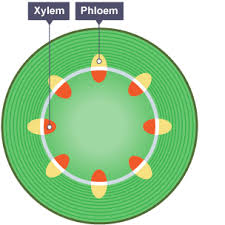3.1.3 transport in plants
1/35
There's no tags or description
Looks like no tags are added yet.
Name | Mastery | Learn | Test | Matching | Spaced |
|---|
No study sessions yet.
36 Terms
Why do plants need a transport system?
-metabolic demands: oxygen and glucose need to be transported to roots as they don’t photosynthesise . Nutrients need to be transported to cells from soil by flow of water through vascular system, and waste needs to be removed from cells
-size
-surface area to volume ratio: small so plants can’t rely on diffusion alone to supply cells
What is a dicotyledonous plant?
A flowering plant with 2 embryonic seed leaves (cotyledons) that usually appear at germination
reason for distribution in roots
gives roots strength to withstand pulling forces they’re exposed to
xylem is cross shape
phloem found between arms of cross
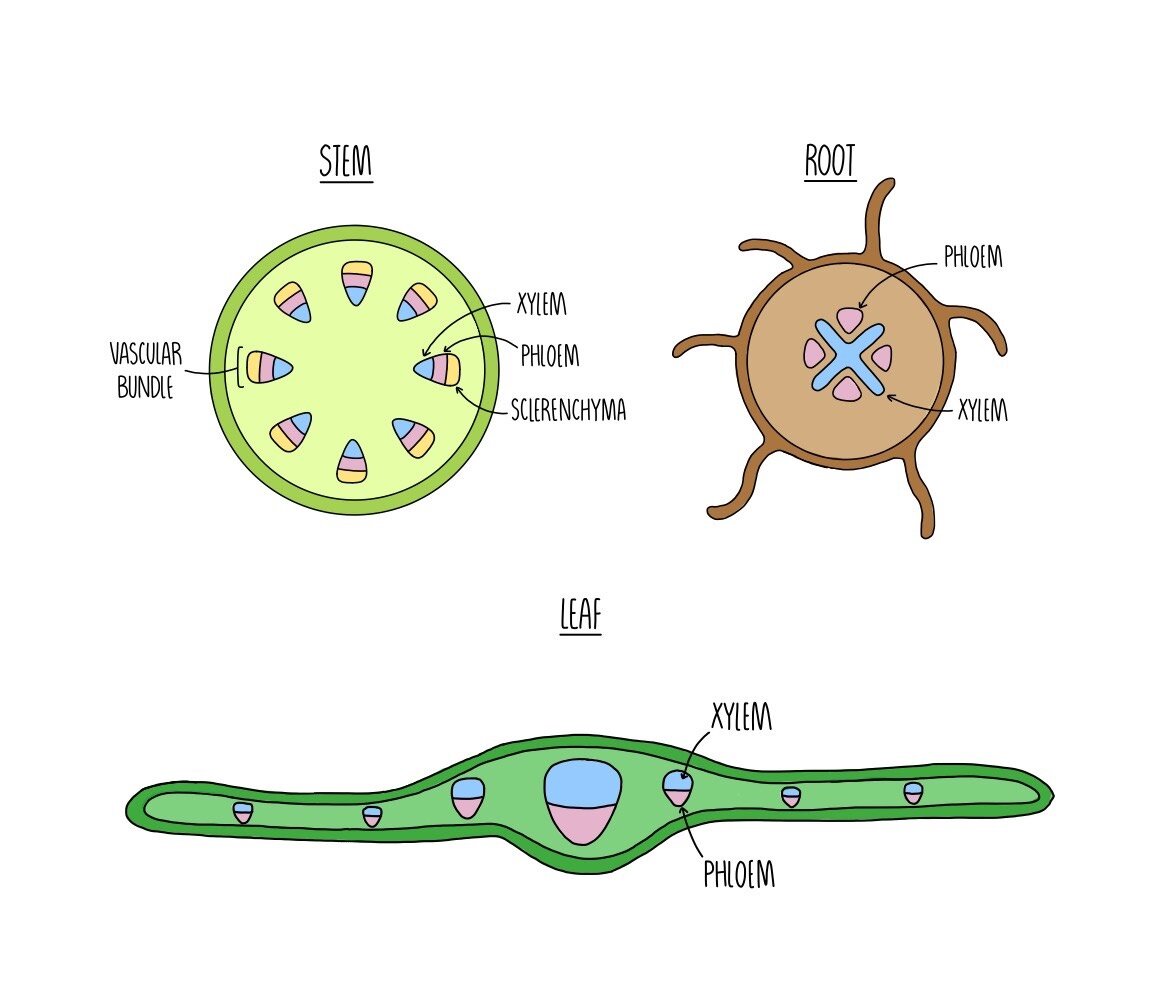
distribution in stem
for strength and support but retain flexibility
xylem on inside, phloem on outside
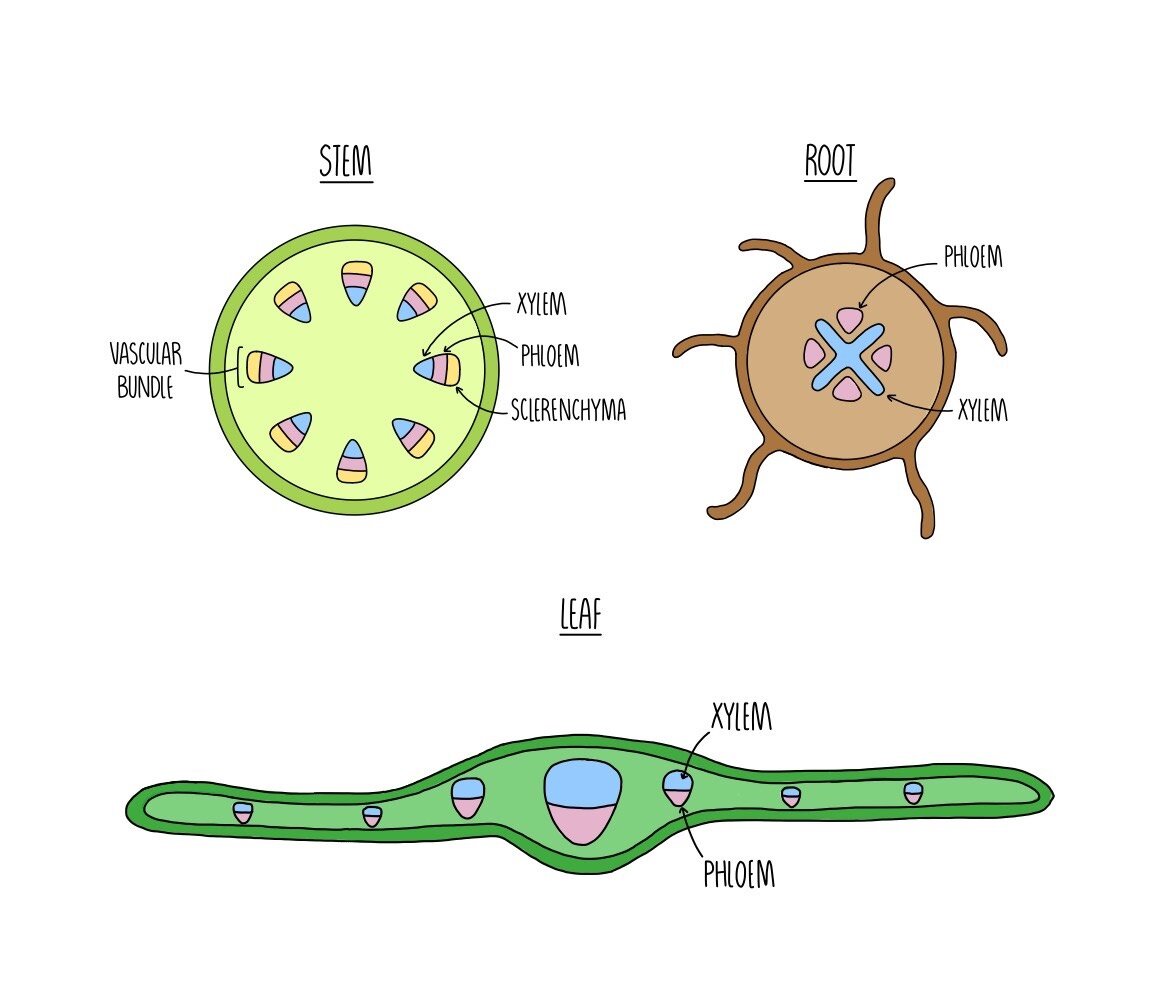
distribution in leaves
prevents leaf collapsing under its own weight, supports it
xylem is on upper side of central midrib and leaf veins
phloem is lower side
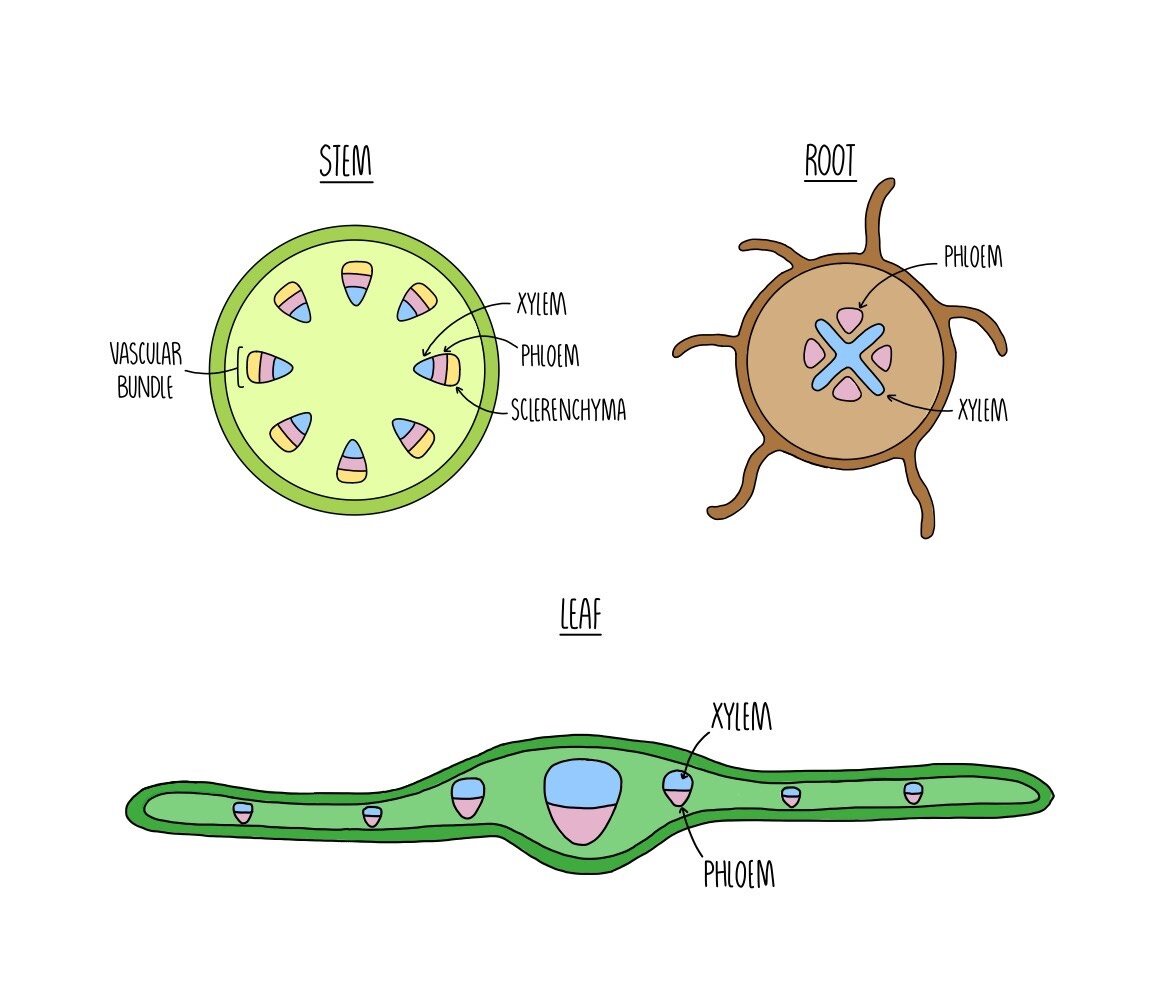
role and adaptations of xylem vessels
-transports water and mineral ions from roots to leaves
-cellulose and lignin strengthen and waterproof cell wall, prevents xylem collapsing due to negative pressure
-not completely lignified to allow flexibility (3 forms of lignin, annular, spiral, reticulate)
-xylem vessels are dead, no cell contents, hollow tube, nothing impedes water flow
-bordered pits/ pores to allow water movement between vessels

xylem parenchyma function
tissues that pack around xylem
Store food and contain tannin deposits (bad tasting chemical, protects from herbivores)
Sieve plates
cross walls with large pores
adaptations of companions cells
-dense cytoplasm due to many mitochondria, they need energy for active transport and supply energy needs of sieve tube elements
-actively load sucrose into sieve tube
-plasmodesmata to allow movement of substances between cells and sieve tube elements
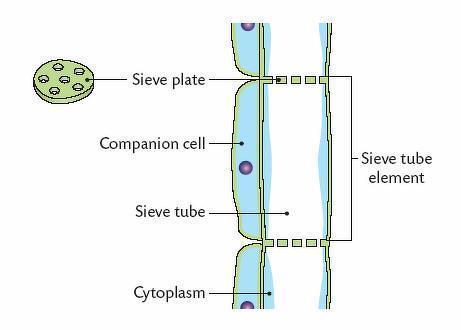
adaptations of sieve tube elements
-thin layer of cytoplasm to prevent cell contents impeding flow of sucrcose solution
-no nucleus
function and structure of phloem
-comprised of 2 cells: companion and sieve tube elements
-thin layer of cytoplasm
tranports assimilates (sucrose and amino acids) around plant
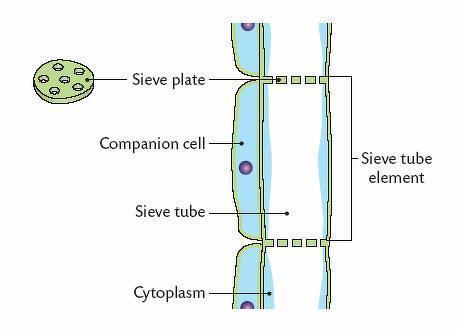
osmosis
net movement of free water molecules through partially permeable membrane from higher to lower water potential, down a water potential gradient
water potential
how freely water molecules move in a system
pure water is 0kPa
what happens if plant cell is placed in pure water vs concentrated solution
-pure water: becomes turgid, vacuole pushes against cell wall
-solution: flaccid, cell surface membrane pulls away from cell wall, conc. solution fills the void
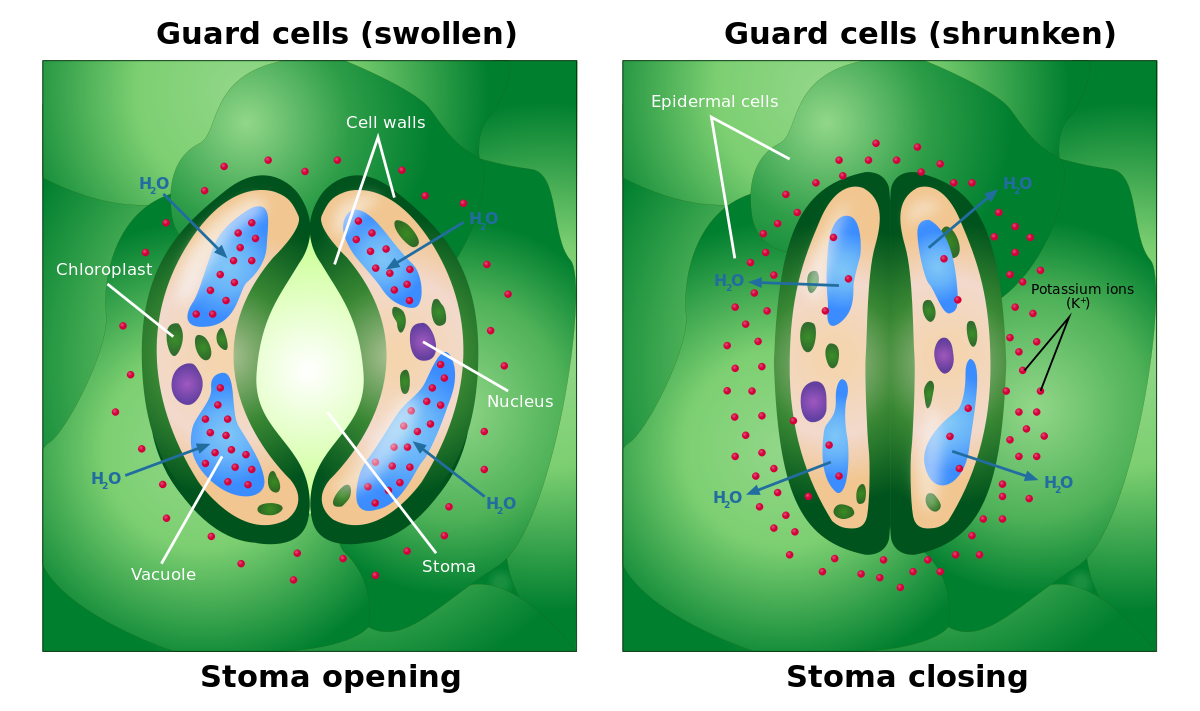
symplast pathway
how water moves through plasmodesmata and cytoplasm (non-living part of plant)
by osmosis
-root hair cell has higher water potential than next cell along, maintains steep water potential gradient
-water diffuses from soil
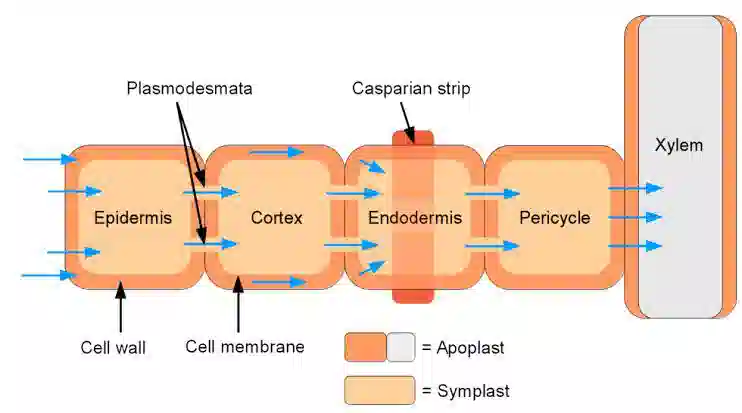
apoplast pathway
through cell walls and intracellular spaces
-as water moves into xylem, more water pulled through apoplast due to cohesion, creates tension
-gets to endodermis, path blocked by casparian strip (waxy strip) so if force through symplast
-usefyl as water passes partially permeable cell surface membrane so some toxic substrances can’t ghet through
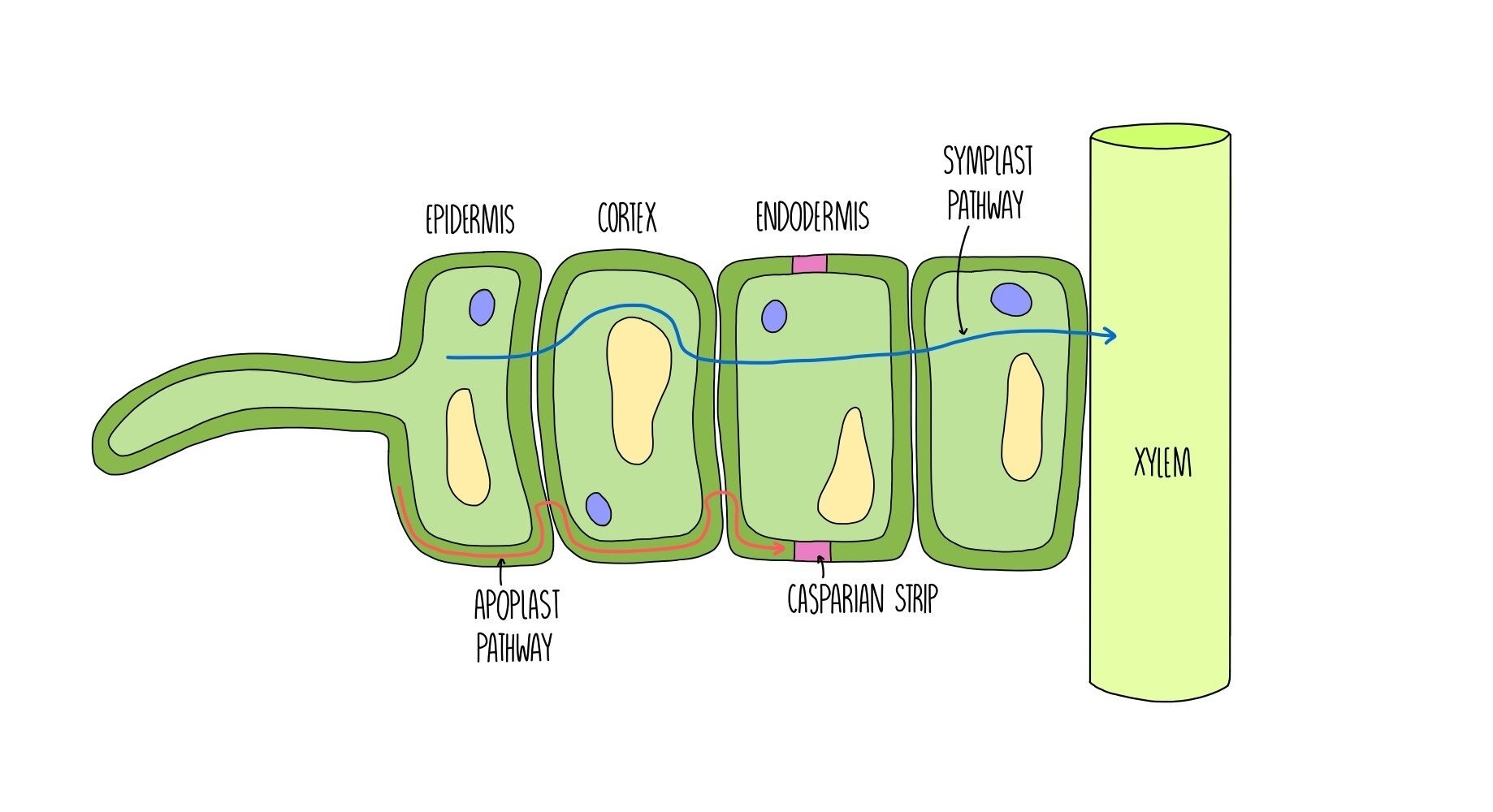
casparian strip
-in endodermis cells
-band of waxt material (suberin) than runs round each endodermal cell
-waterproof layer
-water forces through symplast, passes through partially permeable membrane, excluding toxic solutes
-blocks apoplast pathway, forces water to travel through symplast
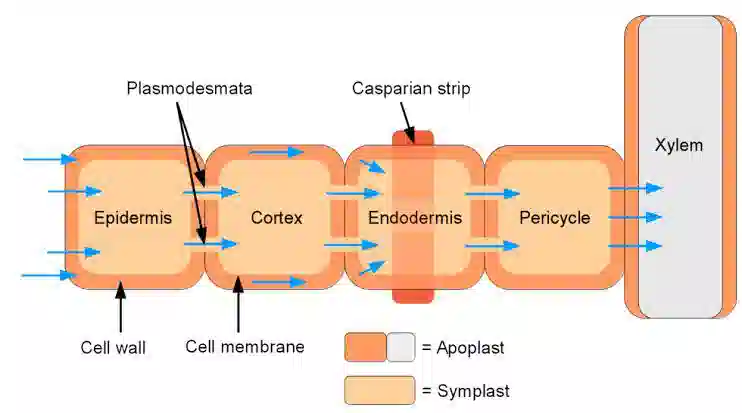
movement of water across cortex of root
-enters through root hair cell, through root cortex, including endodermis
-travels down water potential gradient
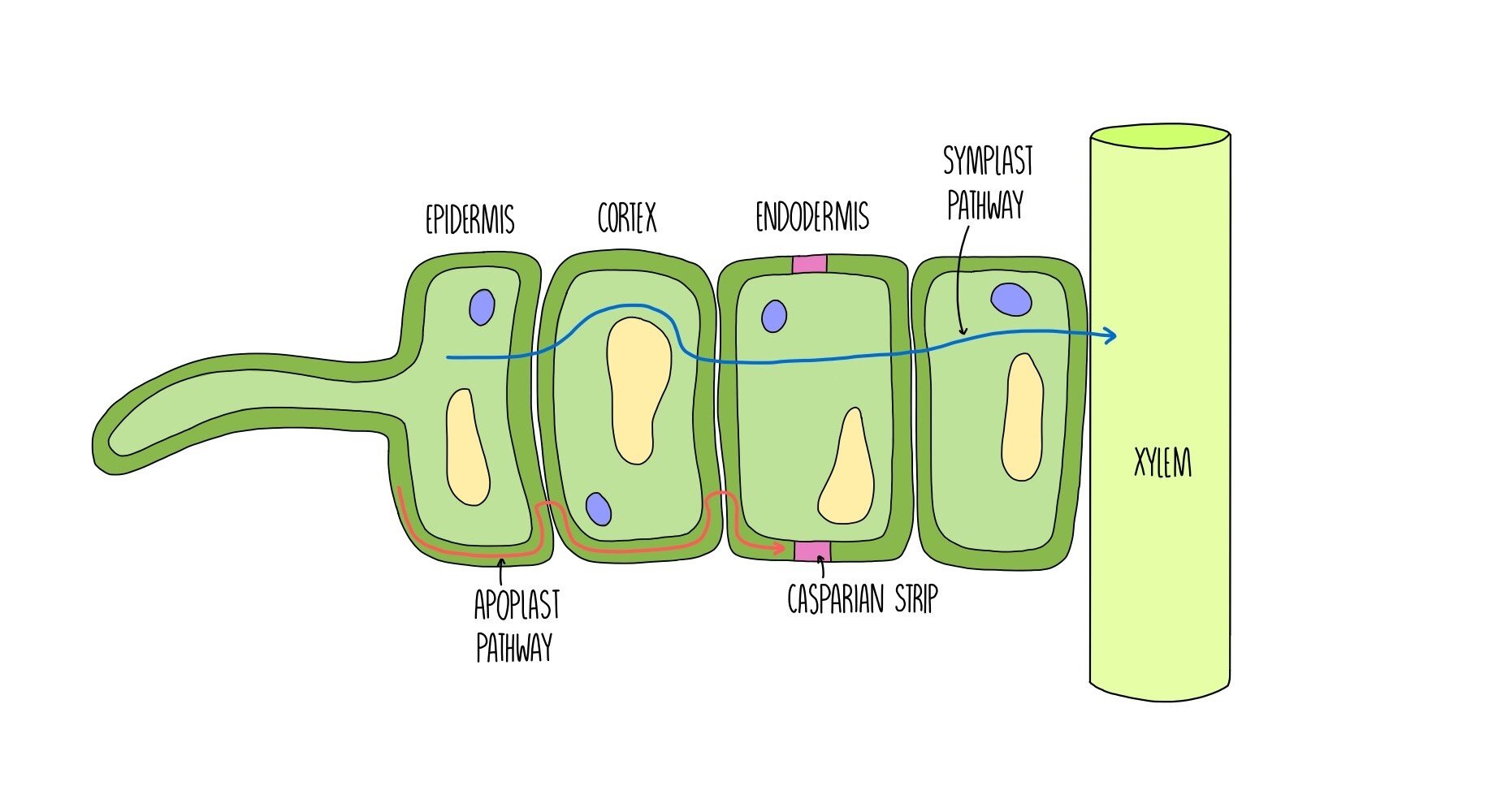
leaf cross section
-upper epidermis: absorbs sunlight
-palisade layer: contains chloroplasts
-spongy mesophyll: big air spaces and large SA fro diffusion of gases
-lower epidermis: guards cells and stomata
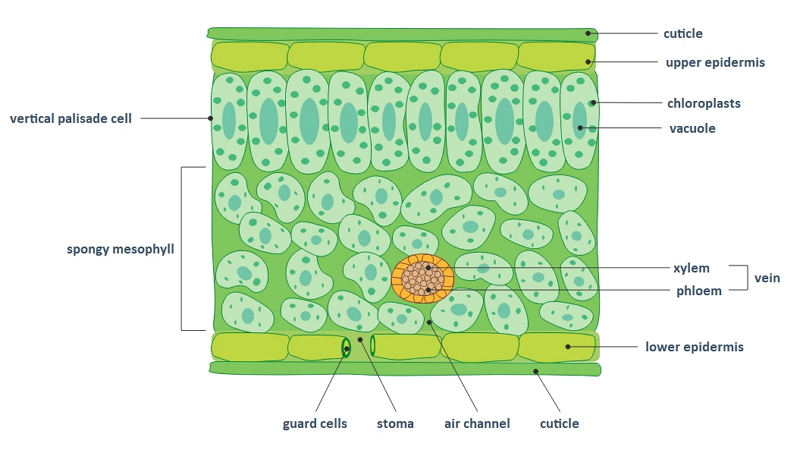
movement of water up the stem: cohesion-tension theory
-root pressure: mineral ions move into xylem from cortex and water follows by osmosis, increasing pressure so water moves from higher to lower hydrostatic pressure
-evaporation of water from cell surface from leaves by transpiration, creates low hydrostatic pressure and therefore tension in xylem, water moves
-cohesion: creates transpiration stream
-adhesion: molecules stick to and climb sides
-water is pulled up xylem to replace it due to negative pressure
definition of tranpiration
loss of water vapour from plant leaves as a result of evaporation of water from cell surfaces inside leaves
-water vapour diffuses into atmosphere through stomata
how do guard cells control loss of water
-in light, they make sugars fro respiration, making ATP
-ATP used in active transport of K+ into guard cells, water follows by osmosis
-guard cells become turgid, thicker wall on inside, bend so stomata open

how does number of, size and position of stomata and number of leaves affect transpiration rate
-more leaves means larger surface area over which water vapour is lost
-large stomata increases rate
-stomata on lower side decreases rate
how does presence of waxy cuticle affect transpiration rate
reduces evaporation from leaf surface
how does light intensity and temperature affect transpiration rate
-stomata open in light fro gas exchange for photosynthesis
-higher temperature increases rate of evaporation, increasing water vapour potential in leaf, increasing rate of diffusion through stomata, decreasing relative water vapour potential in air, allowing diffusion of vapour out of leaf
how does humidity affect transpiration rate
-higher humidity decreases it
smaller water vapour potential gradient between air sacs in leaf and outside air
how does wind affect transpiration rate
-wind carries away water vapour, maintaining high water vapour potential gradient, increasing rate
how does water availability affect transpiration rate
-less water means plant can’t replace water lost, stomata close
how can you use a potometer to measure rate of water uptake by plant
-measure time taken for air bubble to travel a distance
-calculate cross section area of capillary tube
-calculate volume of water uptake
-potometer should be made airtight with vaseline and leaves should by dry
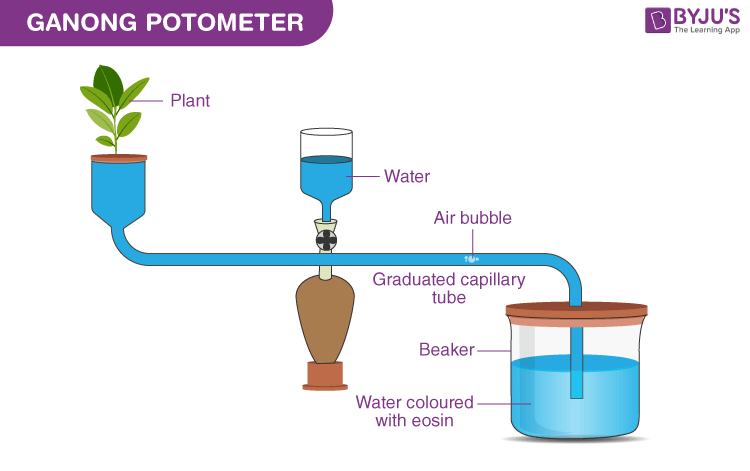
how do sunken stomata reduce water loss…
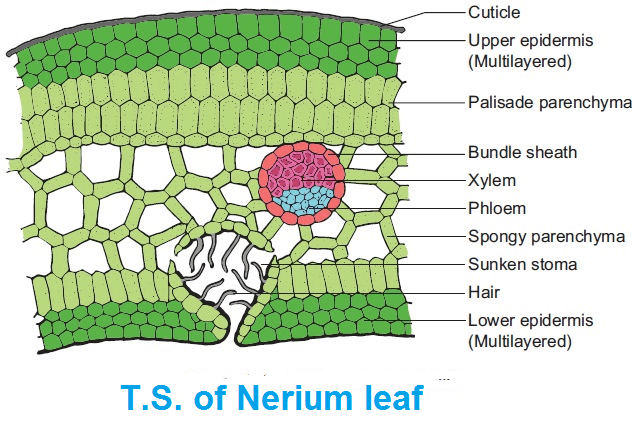
adaptations of xerophytes (plant adapted to live with low water availability, e.g. cacti, marram grass)
-small leaves with small SA:V and thick waxy cuticle minimise water loss
-dense spongy mesophyll reduce cell surface area exposed to air
-stomata close during hottest times and are located in pits, which reduces air movement, makes it humid, reducing WV potential gradient
-leaf hairs create still, humid air
-leaves curl to confine stomata in still, humid air
-plants lose leaves when water’s not available
-high salt concentration in leaves to maintain low water potential
-long roots with large SA:V
adaptations of hydrophytes (plants living in aquatic environments, e.g water lilies)
-thin waxy cuticle, no need to conserve water
-many stomata on upper side always open
-leaves are wide and flat to capture sunlight
-small roots, water can diffuse directly into leaves
-arenchyma are specialised parenchyma (packing tissue) which has large air sacs which enable leaves to float and provide low resistance pathway by which oxygen can diffuse to tissues below water
problems of arenchyma in rice
-provide low resistance pathway by which methane can be vented into atmosphere
steps of translocation
-H+ ions (co-transporter of sucrose) pumped out by active transport to source cells (e.g. leaves) then return to companion cell with sucrose by facilitated diffusion (creating a conc. gradient of H+)
-sucrose diffuses into sieve tube elements from companion cells through plasmodesmata and reduces water potential, so water follows from xylem by osmosis
-increases hydrostatic pressure
-water moves down tube from higher to lower hydrostatic pressure from source (produces assimilates) to sink (requires assimilates)
-sucrose is removed from sieve tube by surrounding sink cells (e.g. root, meristem) by active transport and increases water potential in sieve tube
-water moves out of sieve tube into xylem to reduces hydrostatic pressure
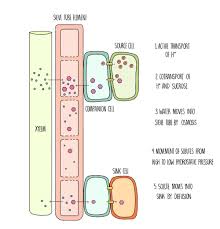
evidence for translocation
-tree ringing: sugars above cut, shows phloem are involved
-rate of flow of sugars is faster than diffusion, showing it requires energy
-companion cells have many mitochondria so requires energy
-aphids mouthparts are in phloem as it has sugars
vascular bundle
-xylem and phloem
-cambium in the middle
